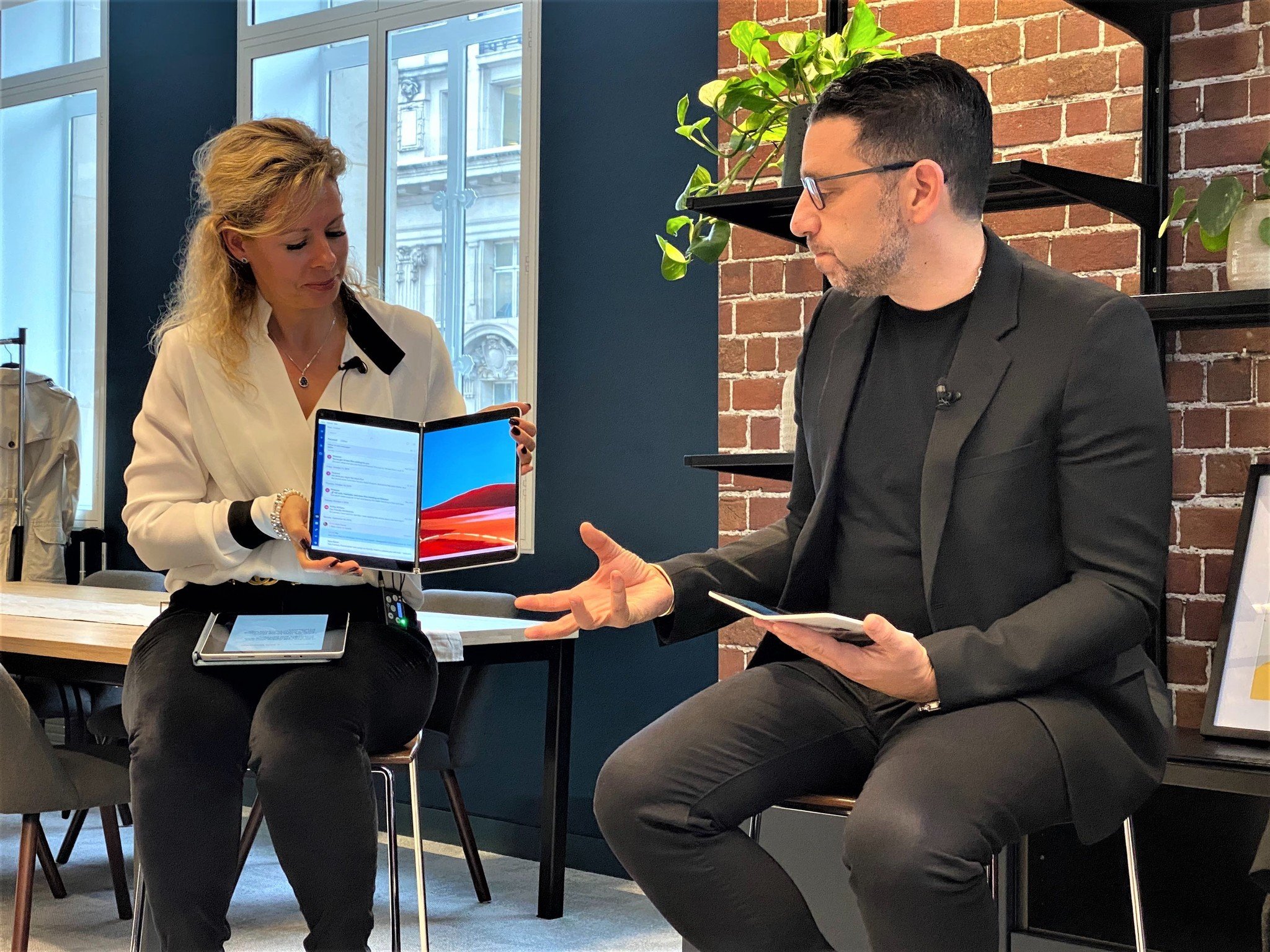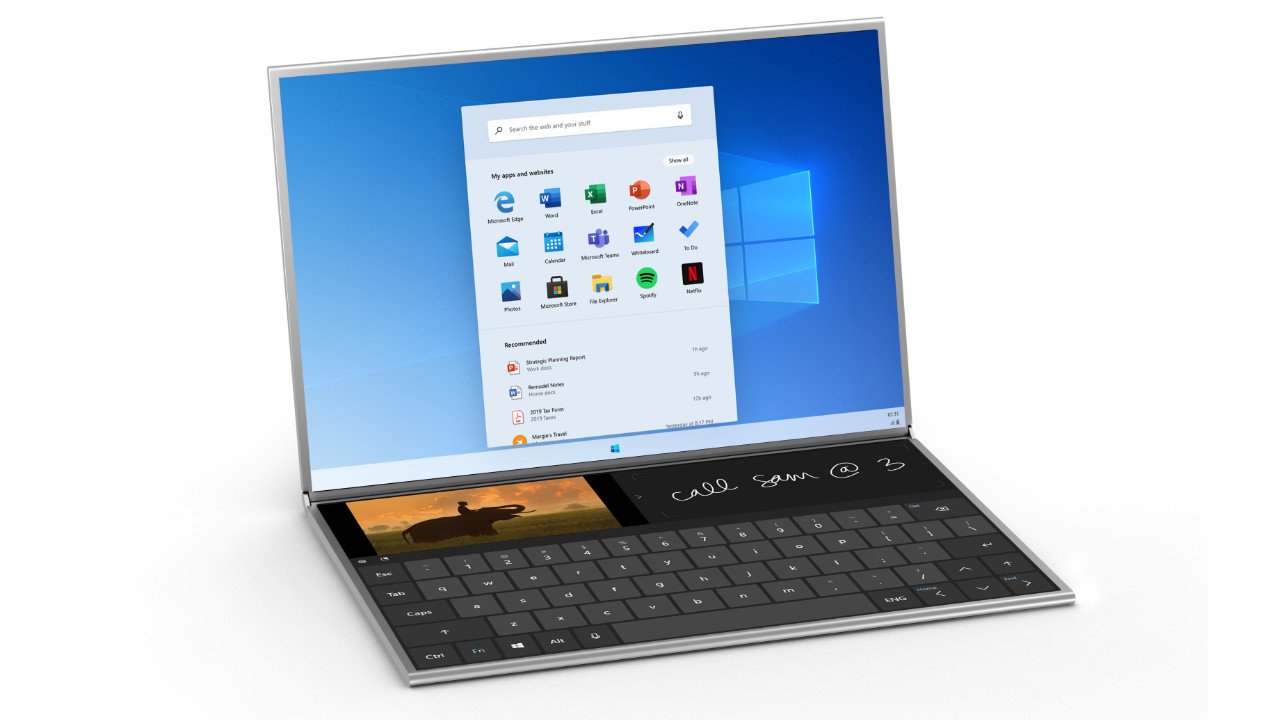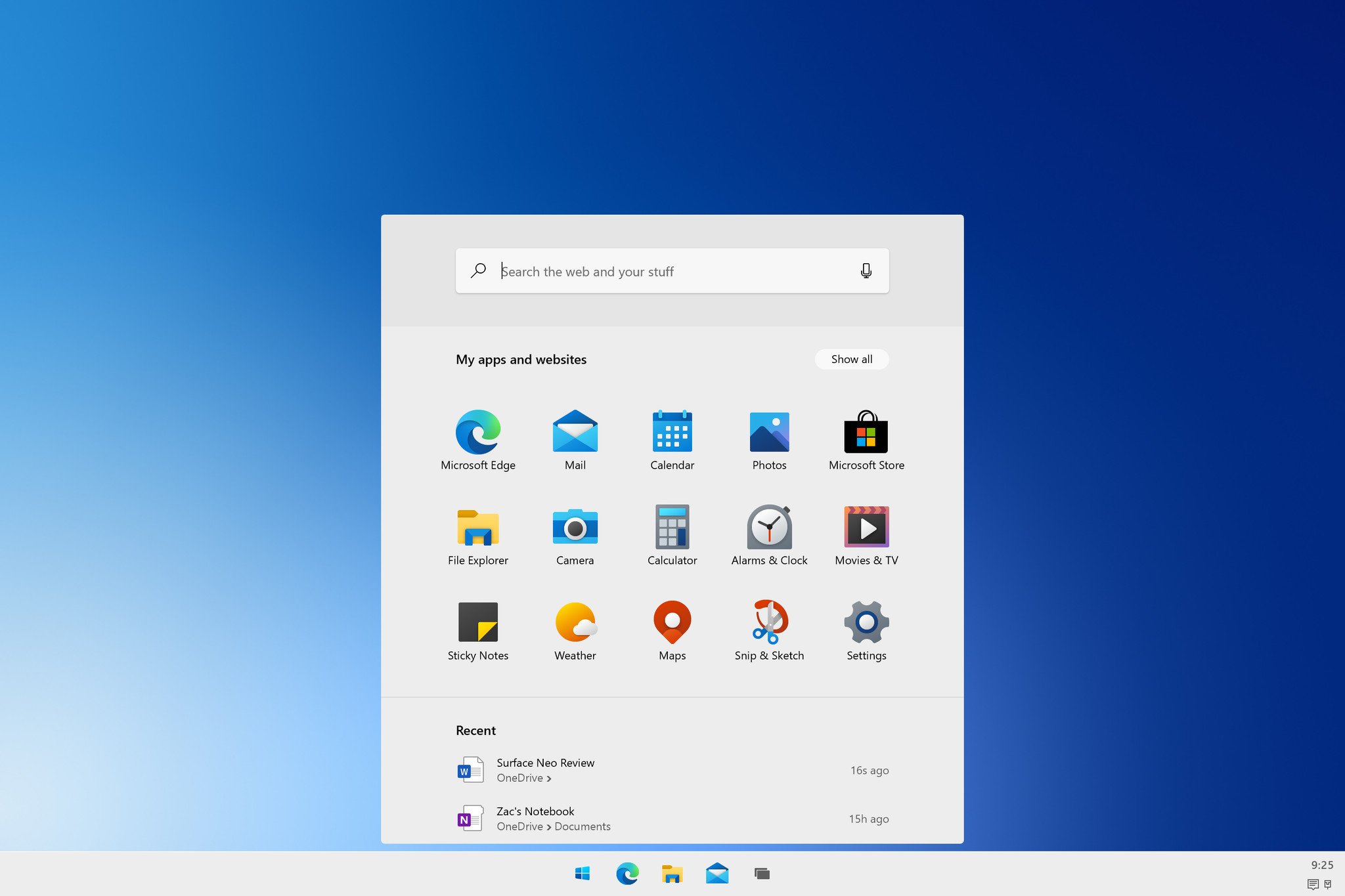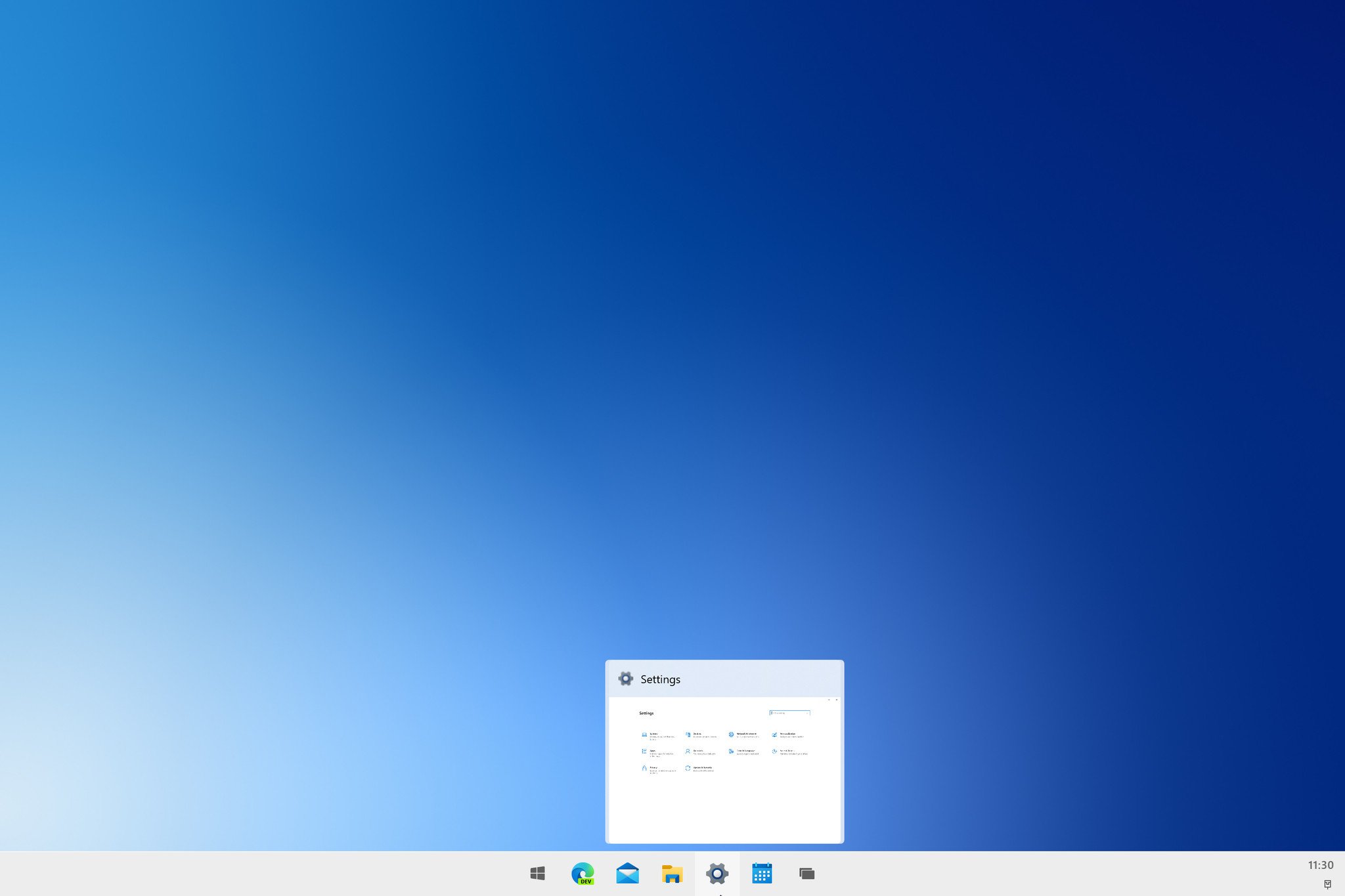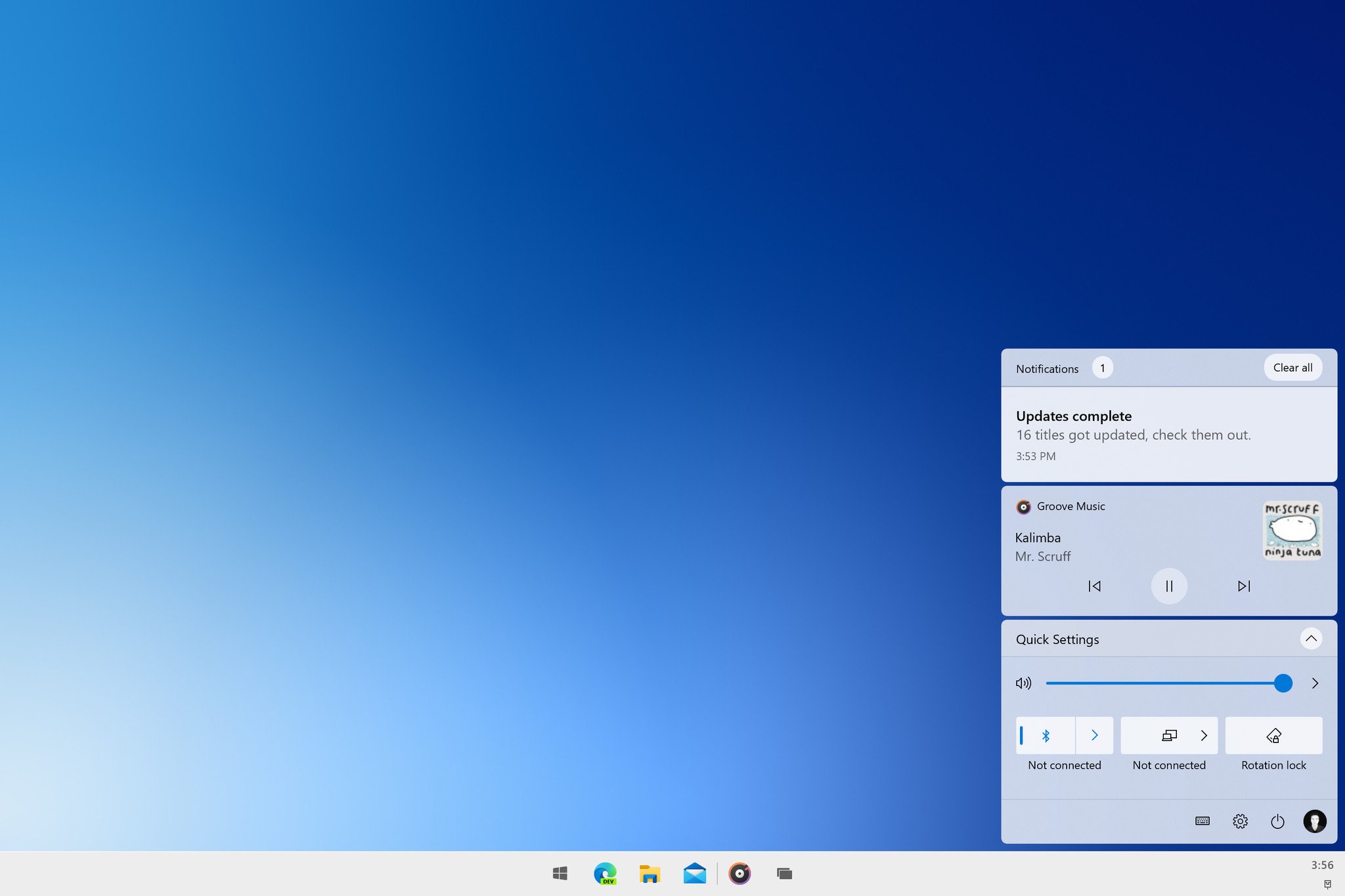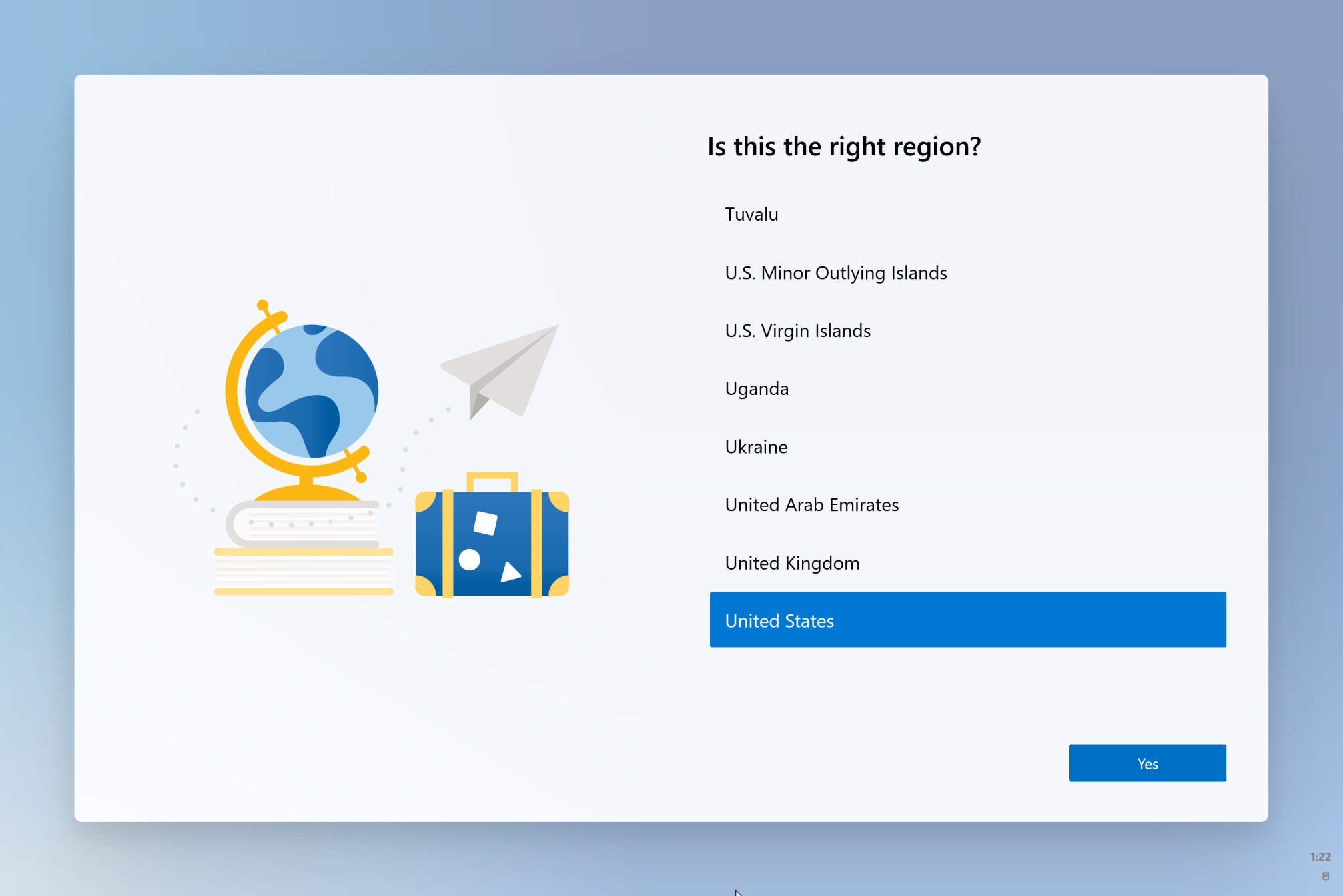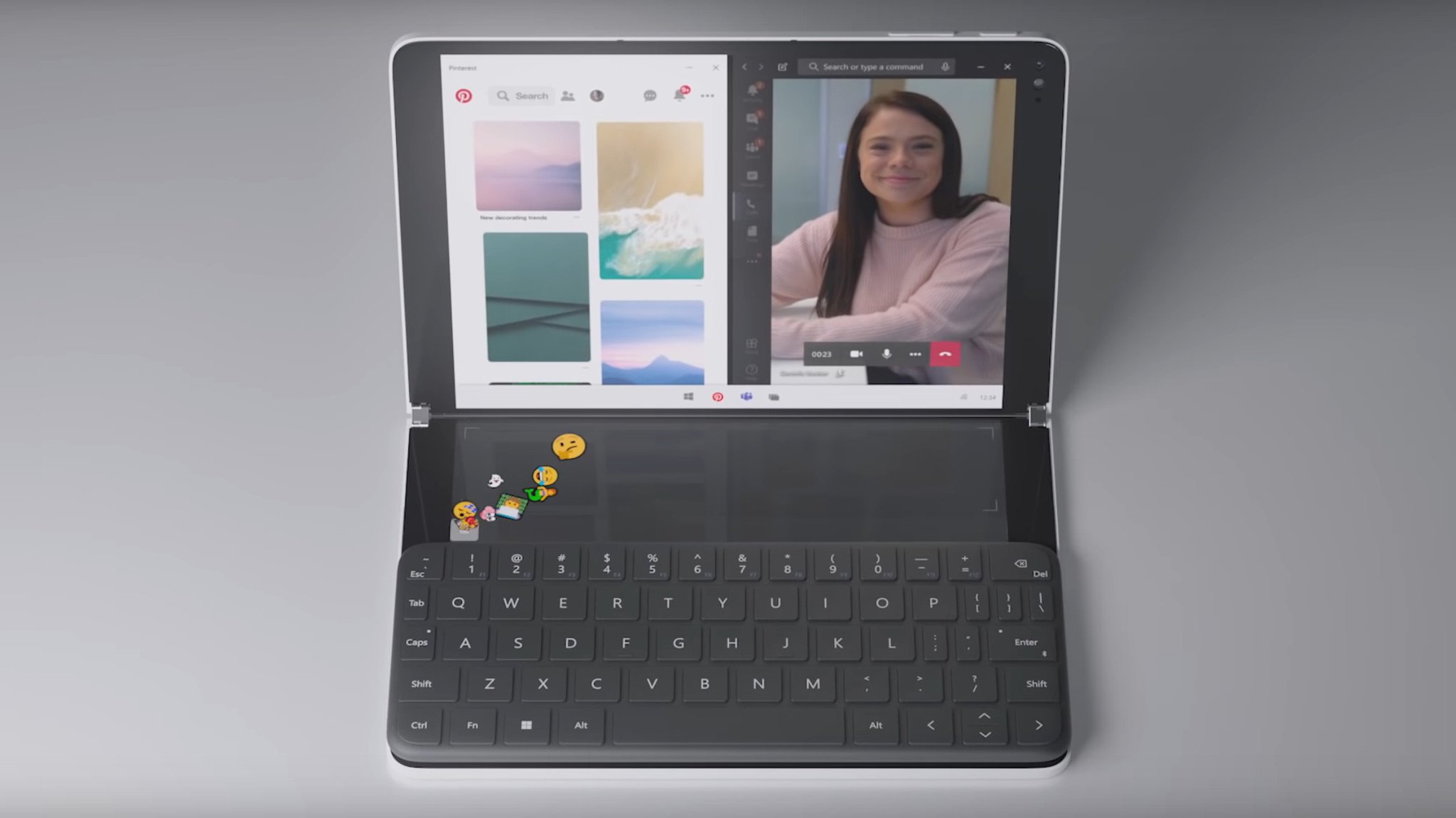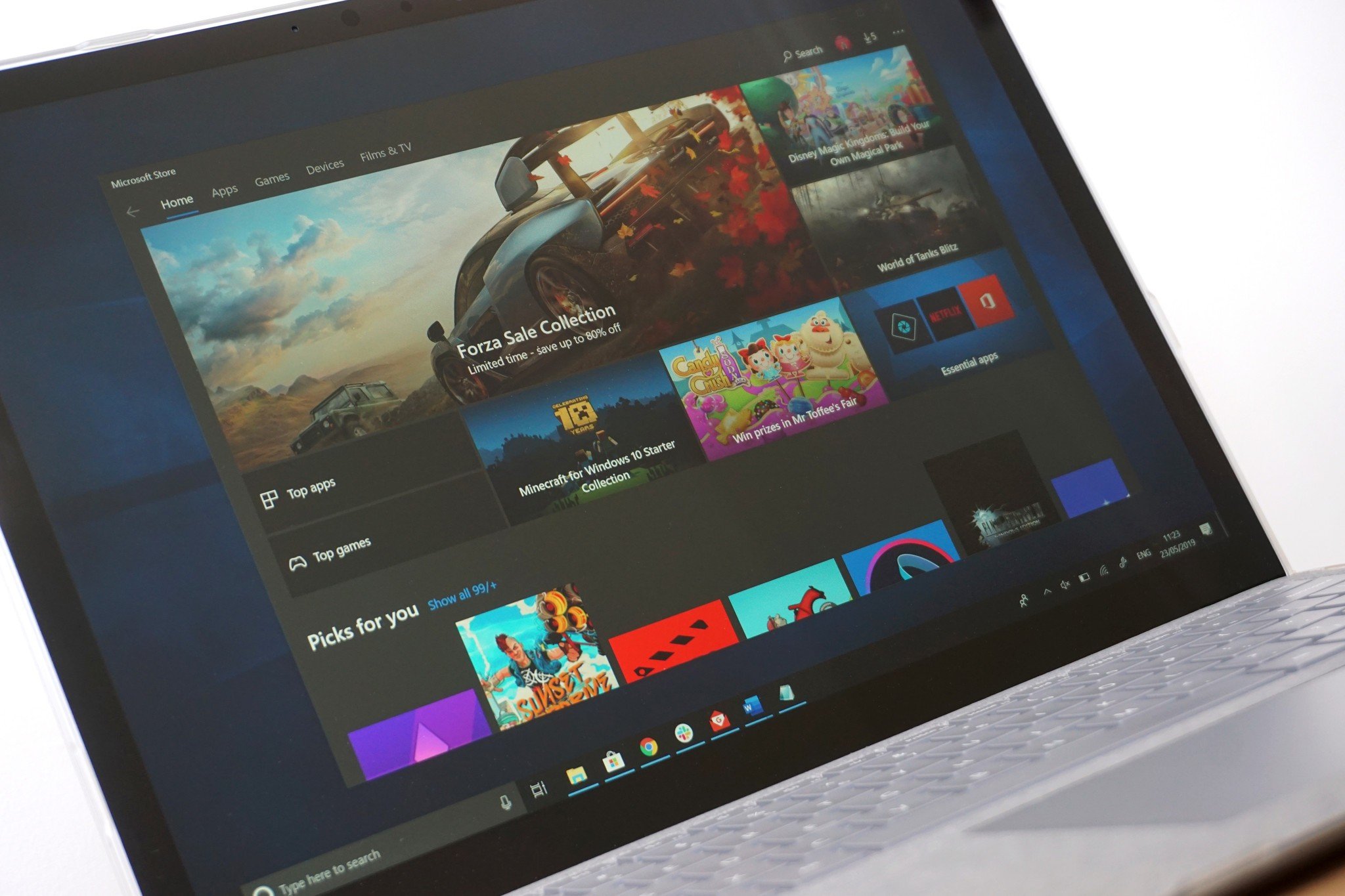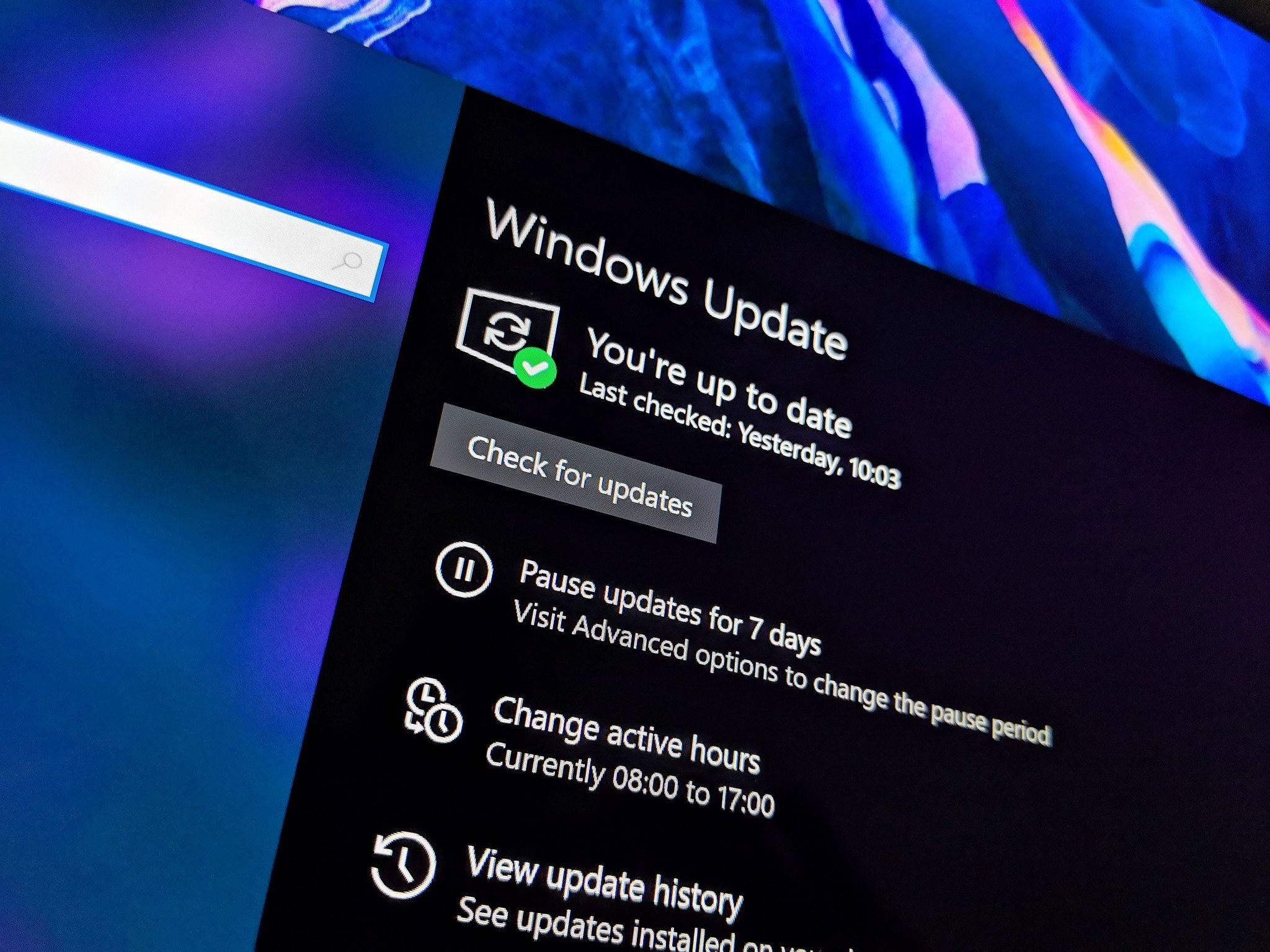Windows 10X is launching this year on a new wave of foldable PCs. Here's what we know so far.
Windows 10X is a new version of Windows 10 that been built from the ground up for foldable PC experiences in both dual-screen and single-screen configurations. It's built on top of a new modern version of Windows 10 that guts legacy components and features in favor of contemporary user experiences and enhanced security. This means everything from the Windows Shell to the underlying OS has been rebuilt with modern technologies, while still maintaining legacy app support for those who need it.
A new user experience
Windows 10X features a new shell — the user interface — that has been built with modern technologies. It's an adaptive user experience that can adjust depending on the "posture" of your device. For example, with a foldable PC, the user might want to use it in several different ways; as a laptop, or tablet, or in tent mode for movies. Because of this, the user interface must adapt to provide the best experience no matter which way your device is being used.
This also means that legacy shell elements, such as the Control Panel, File Explorer, and error dialogs and icons are gone on Windows 10X. As Microsoft has rebuilt the entire shell, it doesn't include any of the legacy things that makes Windows 10 so inconsistent when it comes to UI. The Windows Shell on Windows 10X should be much more consistent.
A new Start menu
Microsoft is redesigning the Start menu experience on Windows 10X with a focus on productivity. It features a system-wide search bar along the top that can also search the web and a grid of installed apps below that in place of live tiles. It also has a "recommended" area that dynamically updates with things the user might want to jump straight into, such as recent Office documents and visited websites.
The apps list can be customized, with the ability for users to rearrange which apps show up in the first few rows. Windows 10X will also support app folders in the Start menu, allowing users to group multiple apps under one folder, just like the existing Start menu on Windows 10.
A new Taskbar
Windows 10X also has a new adaptive taskbar that can change depending on device form factor or user preference. In marketing material, items like the Start button, pinned, and running apps are centered on the Taskbar. I'm told that this is customizable, and users can choose to have those icons left-aligned instead if they wish, just like on Windows 10.
There's a new touch-centric Taskbar experience that minimizes when running an app, and can be swiped upon for accessing things like the Start menu or Action Center. When a keyboard and mouse is connected, the Taskbar will adapt to behave more like a traditional taskbar, meaning it won't minimize when an app is running.
A new Action Center
In addition to the new Start and Taskbar experiences, there's also a new Action Center to compliment them. This new Action Center puts more emphasis on quick actions, with the ability to jump into specific quick actions for further control without leaving the Action Center at all. It's also designed in such a way that mimics a control center, with notifications housed above it in a separate box. This new Action Center includes things like volume controls, power options, and battery percentage.
A new set up experience
Since every part of Windows 10X has been redesigned, the out of box experience has too been updated with a modern look and feel. It still walks you through the Windows setup process, selecting your language, signing-in with a Microsoft Account, and agreeing to terms and conditions, but I'm told that Cortana is no longer present throughout the set up process. It's a more traditional setup experience, that's been beautified on 10X.
Compose Mode
Compose Mode is a new button in the Action Center that switches the user experience from being consumption-based to productivity-based. Compose Mode is automatically initiated on devices like Surface Neo when you place the keyboard on one of the displays and is essentially the toggle between touch-first and keyboard/mouse centric input.
On devices that don't have a dedicated keyboard or trackpad, Compose Mode will use screen real-estate for a virtual keyboard and trackpad, which has been enhanced with emoji, gif, and ink support. It'll also switch the taskbar from that minimized state to a more traditional taskbar that doesn't need to be swiped upon.
By default, apps on Windows 10X operate in full-screen and cannot be manipulated as traditional windows. However, on devices with larger screens, enabling Compose Mode should allow apps to run in free-form windows, just like a regular laptop. I'm unsure if users will be able to force windowed apps on devices with small screens, but Microsoft is open to feedback regarding this.
Legacy app support
Since Windows 10X is a modern OS, support for legacy Windows applications is done through a new containerized mode that essentially spins up stripped down version of full Windows 10 in the background every time the user wants to run a legacy application. This means that when the user isn't running a legacy app, the OS isn't getting bogged down by legacy components, which improves battery life and system performance overall.
Unlike legacy applications, modern UWP and web apps run natively on Windows 10X. Microsoft has been working hard to make sure there's no noticeable difference in performance between legacy apps and modern apps. Still, there might be a slight delay when launching a legacy app if no other legacy apps are running. Because of how containerization works, Win32 apps on Windows 10X are sandboxed and cannot affect the overall system. This means programs that affect system files or partition hard drives won't be allowed.
Improved Windows Update
Microsoft is also improving Windows Update in a way that makes it much faster on Windows 10X. Feature updates will not take as long to install as they do on Windows 10 as those feature updates are now installed in the background without requiring a reboot until the update is done. So, just like on Android and Chrome OS, when the update is ready to restart your PC, it'll just restart like normal, and won't take 15 minutes to finish installing before you're back up and running.
This should result in updates that take less than 90 seconds to reboot. Internal testing suggests it's even faster than that. This is a huge improvement over how Windows 10 does updates today, which can take anywhere between 5 minutes and 20 minutes to reboot, depending on the device.
Dynamic wallpapers

This is yet to be officially announced, but I understand that Windows 10X features dynamic wallpapers that change content depending on different factors. For example, Windows 10X features a mountain-view wallpaper that has morning, afternoon, evening, and night variants that appear based on your device's actual time. This wallpaper also seemingly has dynamic clouds that appear every so often.
I don't know how many of these dynamic wallpapers will be present on Windows 10X, and I don't know how complex they can be either. It's nice to see more customization options for users, however.
Exclusive to foldable PCs at launch
Windows 10X will only be available on devices that ship with it, and those devices will begin shipping in the second half of 2020. This means if you want to use Windows 10X, you will have to buy a new PC that comes with Windows 10X preinstalled. The OS will not be made available to purchase or download to install on existing hardware, and won't be pushed as an update for Windows 10 users either.
In the future, we anticipate Microsoft will make Windows 10X available for more than just foldable PCs. While the OS will launch exclusivesly for foldables at the end of 2020, in the months after OEMs will be able to ship Windows 10X on traditional form factors such as laptops and 2-in-1's, as the OS is capable of running on those form factors as well.
Check back later
We'll continue to update this post with new information as it becomes available. In the meantime, what are you most looking forward to with Windows 10X? Let us know in the comments.
